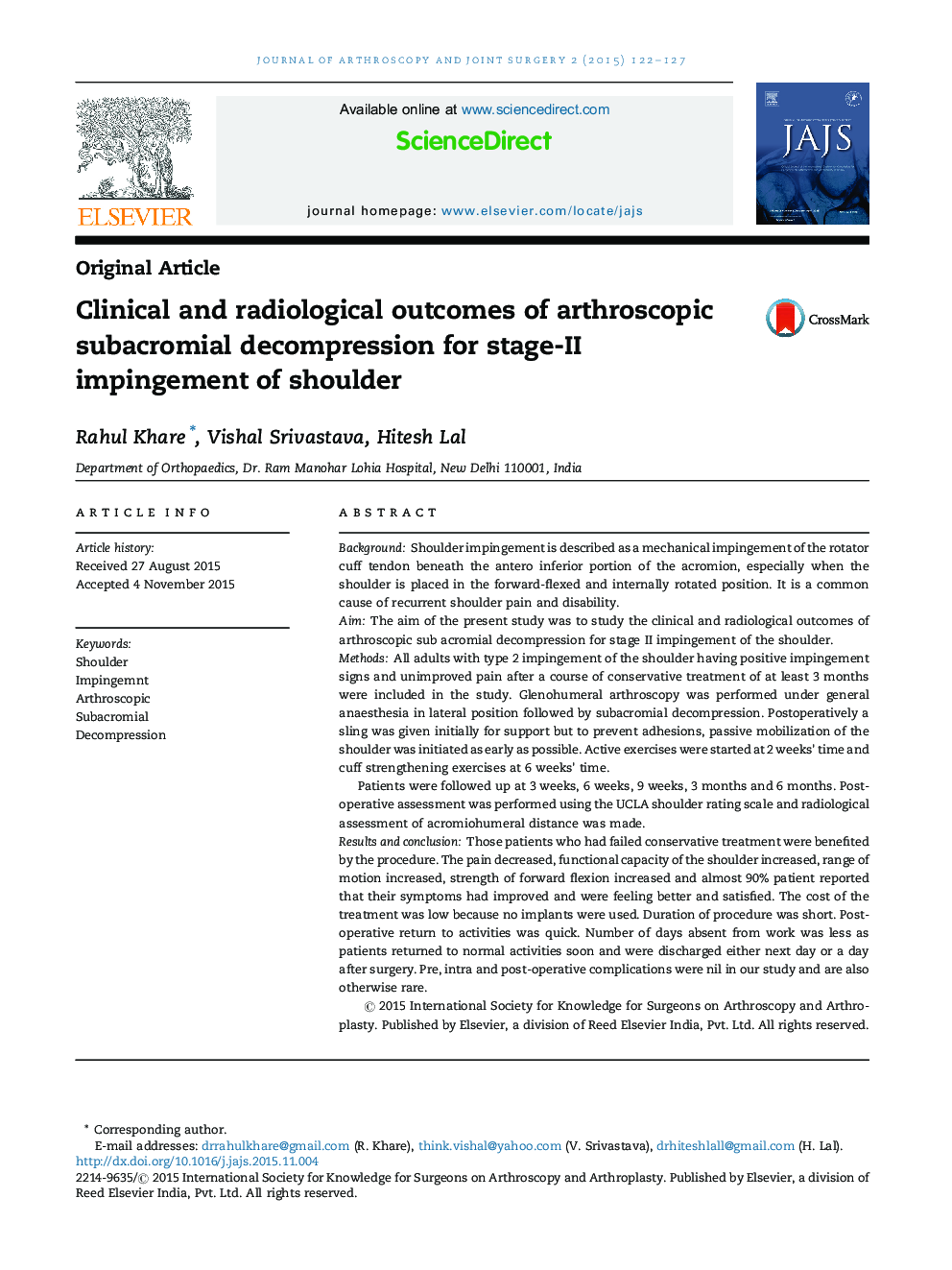| Article ID | Journal | Published Year | Pages | File Type |
|---|---|---|---|---|
| 3245101 | Journal of Arthroscopy and Joint Surgery | 2015 | 6 Pages |
BackgroundShoulder impingement is described as a mechanical impingement of the rotator cuff tendon beneath the antero inferior portion of the acromion, especially when the shoulder is placed in the forward-flexed and internally rotated position. It is a common cause of recurrent shoulder pain and disability.AimThe aim of the present study was to study the clinical and radiological outcomes of arthroscopic sub acromial decompression for stage II impingement of the shoulder.MethodsAll adults with type 2 impingement of the shoulder having positive impingement signs and unimproved pain after a course of conservative treatment of at least 3 months were included in the study. Glenohumeral arthroscopy was performed under general anaesthesia in lateral position followed by subacromial decompression. Postoperatively a sling was given initially for support but to prevent adhesions, passive mobilization of the shoulder was initiated as early as possible. Active exercises were started at 2 weeks’ time and cuff strengthening exercises at 6 weeks’ time.Patients were followed up at 3 weeks, 6 weeks, 9 weeks, 3 months and 6 months. Post-operative assessment was performed using the UCLA shoulder rating scale and radiological assessment of acromiohumeral distance was made.Results and conclusionThose patients who had failed conservative treatment were benefited by the procedure. The pain decreased, functional capacity of the shoulder increased, range of motion increased, strength of forward flexion increased and almost 90% patient reported that their symptoms had improved and were feeling better and satisfied. The cost of the treatment was low because no implants were used. Duration of procedure was short. Post-operative return to activities was quick. Number of days absent from work was less as patients returned to normal activities soon and were discharged either next day or a day after surgery. Pre, intra and post-operative complications were nil in our study and are also otherwise rare.
